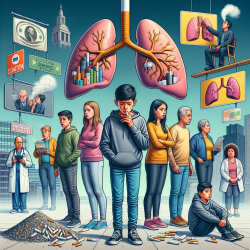Introduction
In the realm of speech language pathology, particularly when working with children, understanding and leveraging power dynamics can significantly enhance therapeutic outcomes. The research paper titled A summative content analysis of how programmes to improve the right to sexual and reproductive health address power provides valuable insights into how power dynamics are addressed in health programs. Although the focus is on sexual and reproductive health, the methodologies and findings can be extrapolated to speech language pathology to improve outcomes for children.
Understanding Power Dynamics
The concept of power is pivotal in shaping health outcomes. In speech language pathology, power dynamics can influence how therapy is delivered and received. For instance, the relationship between the therapist, child, and family can be seen as a power dynamic that, when understood and managed effectively, can lead to better engagement and outcomes.
Data-Driven Insights from the Research
The research highlights several key approaches that can be adapted for speech language pathology:
- Multi-Level Interventions: Programs that address multiple levels of influence simultaneously tend to be more effective. In speech therapy, this could mean involving not just the child, but also parents, teachers, and peers to create a supportive environment.
- Behavioral Change Strategies: Focusing on changing behaviors at both individual and community levels can be beneficial. For speech therapy, this might involve training parents and teachers to reinforce therapeutic techniques outside of sessions.
- Community Engagement: Engaging the broader community can help shift norms and create a more supportive environment for children receiving therapy.
Applying These Insights to Speech Language Pathology
To implement these insights, practitioners can consider the following strategies:
- Collaborative Goal Setting: Involve children and their families in setting therapy goals to ensure they are meaningful and relevant, thus enhancing motivation and engagement.
- Empowerment through Education: Educate families and communities about the importance of speech therapy and how they can support children’s progress, thereby shifting power dynamics to be more inclusive and supportive.
- Feedback Mechanisms: Establish mechanisms for regular feedback from children and families to adapt therapy approaches, ensuring they remain effective and empowering.
Encouraging Further Research
While the research provides a strong foundation, further exploration into how power dynamics specifically affect speech language pathology is needed. Practitioners are encouraged to conduct their own studies or collaborate with researchers to build a robust evidence base that can inform practice and policy.
Conclusion
By understanding and addressing power dynamics, speech language pathologists can enhance therapeutic outcomes for children. The insights from the research on sexual and reproductive health programs offer valuable lessons that can be adapted to improve the efficacy of speech therapy. Practitioners are encouraged to embrace these strategies and continue exploring how power dynamics can be leveraged to create positive change.
To read the original research paper, please follow this link: A summative content analysis of how programmes to improve the right to sexual and reproductive health address power.










